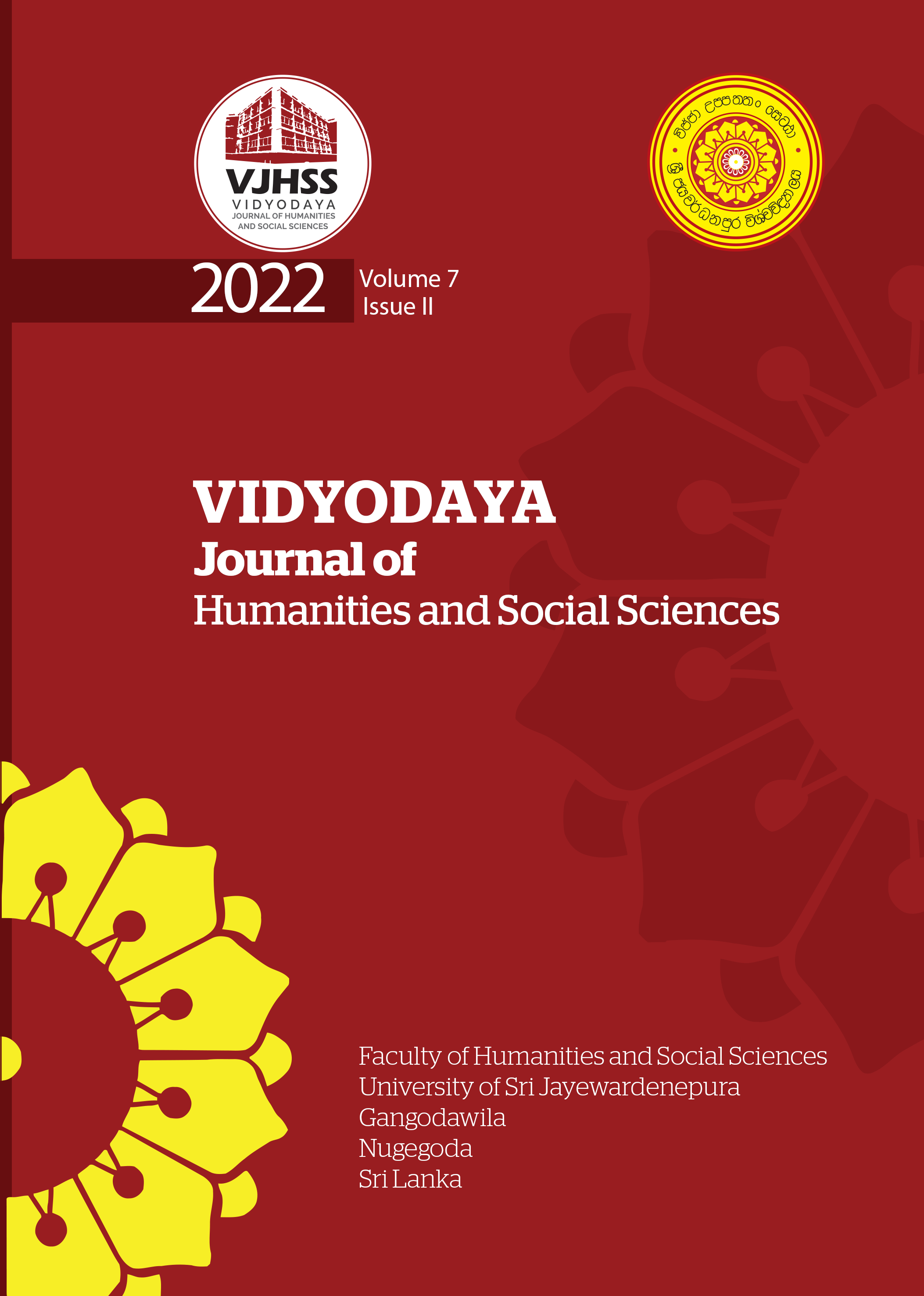A Criminological Study on Family Environmental Factors Affecting Child Sexual Abuse in Sri Lanka
Abstract
Child sexual abuse is a serious crime prohibited by Sri Lankan criminal law, which is discussed under child abuse. There are various factors that contribute to the sexual abuse of children. This research has conducted a criminological study of the family environmental factors affecting child sexual abuse in Sri Lanka. The research was conducted in the Kalutara and Colombo districts of the Western Province and 228 sexually abused children were used as the main sample in 2015-2020. Two separate samples were also used for officers on duty with regard to parents and children from the victims. The data obtained from the research have been extensively analyzed quantitatively and qualitatively. 87% of victims of sexual abuse are girls. The majority of 42% represent the 15-17 category. 47% of the majority are victims of corruption. The boyfriend (42%) is responsible for most of the abuse. 33% of victims have been sexually abused in their own home and 32% in the home of the abuser. Family vulnerabilities such as family economic difficulties, parental ignorance, extramarital affairs, single parent family, parental separation, family disputes, parental emigration, paternal and drug abuse, various physical and mental disorders of the parents, family moral decline, and breakdown of parent-child cooperation And various problems of children, problems in the social environment can be identified as factors contributing to sexual abuse. A child faces many problems when he or she is sexually abused. This physical, mental and social impact is detrimental not only to the child affected but also to his family, society and the country as a whole. It can be pointed out that an integrated approach is more effective in controlling and preventing child sexual abuse.
DOI: http://doi.org/10.31357/fhss/vjhss.v07i02.08



